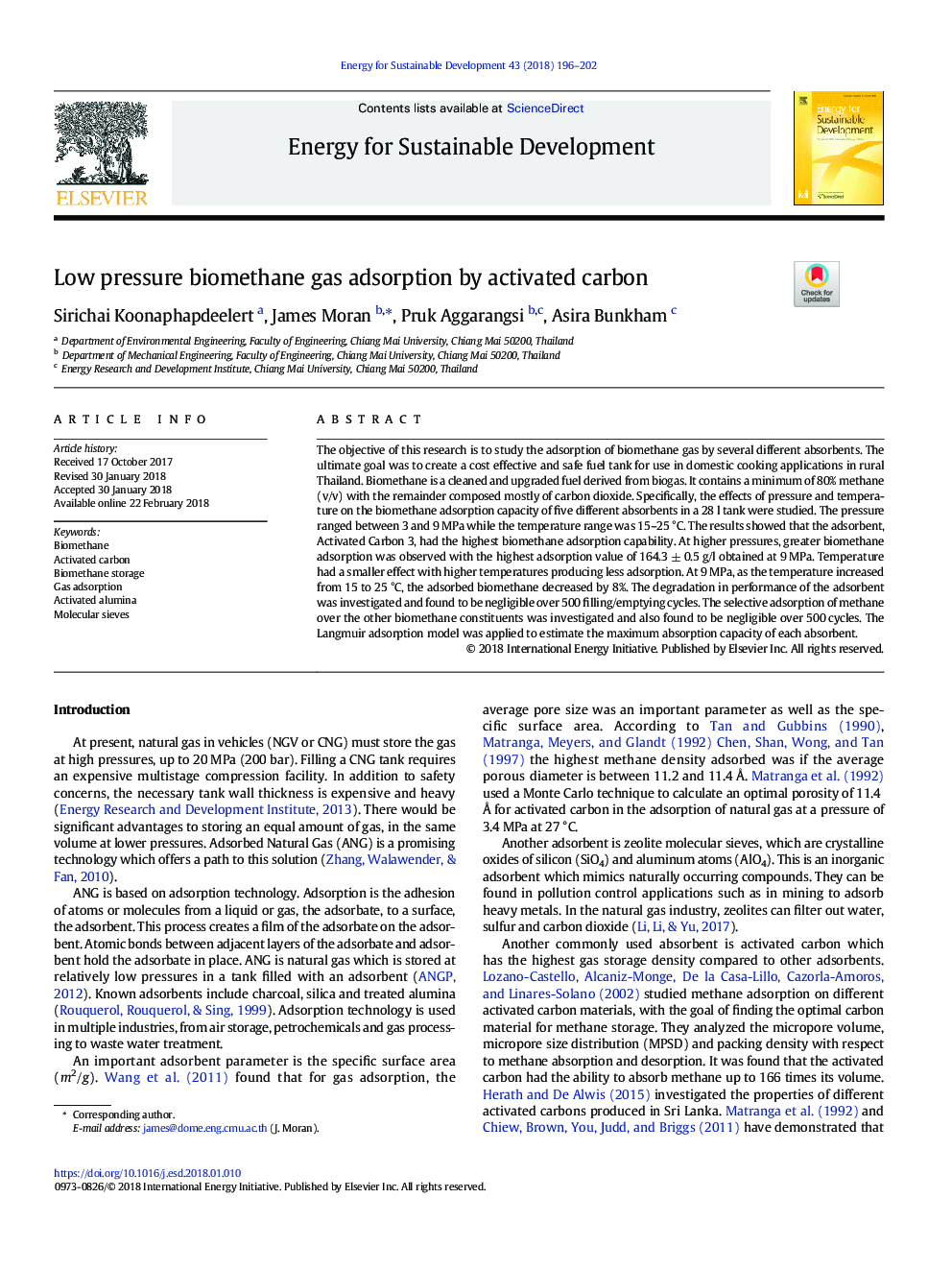| Article ID | Journal | Published Year | Pages | File Type |
|---|---|---|---|---|
| 7453643 | Energy for Sustainable Development | 2018 | 7 Pages |
Abstract
The objective of this research is to study the adsorption of biomethane gas by several different absorbents. The ultimate goal was to create a cost effective and safe fuel tank for use in domestic cooking applications in rural Thailand. Biomethane is a cleaned and upgraded fuel derived from biogas. It contains a minimum of 80% methane (v/v) with the remainder composed mostly of carbon dioxide. Specifically, the effects of pressure and temperature on the biomethane adsorption capacity of five different absorbents in a 28â¯l tank were studied. The pressure ranged between 3 and 9â¯MPa while the temperature range was 15-25â¯Â°C. The results showed that the adsorbent, Activated Carbon 3, had the highest biomethane adsorption capability. At higher pressures, greater biomethane adsorption was observed with the highest adsorption value of 164.3â¯Â±â¯0.5â¯g/l obtained at 9â¯MPa. Temperature had a smaller effect with higher temperatures producing less adsorption. At 9â¯MPa, as the temperature increased from 15 to 25â¯Â°C, the adsorbed biomethane decreased by 8%. The degradation in performance of the adsorbent was investigated and found to be negligible over 500 filling/emptying cycles. The selective adsorption of methane over the other biomethane constituents was investigated and also found to be negligible over 500â¯cycles. The Langmuir adsorption model was applied to estimate the maximum absorption capacity of each absorbent.
Related Topics
Physical Sciences and Engineering
Energy
Energy (General)
Authors
Sirichai Koonaphapdeelert, James Moran, Pruk Aggarangsi, Asira Bunkham,
